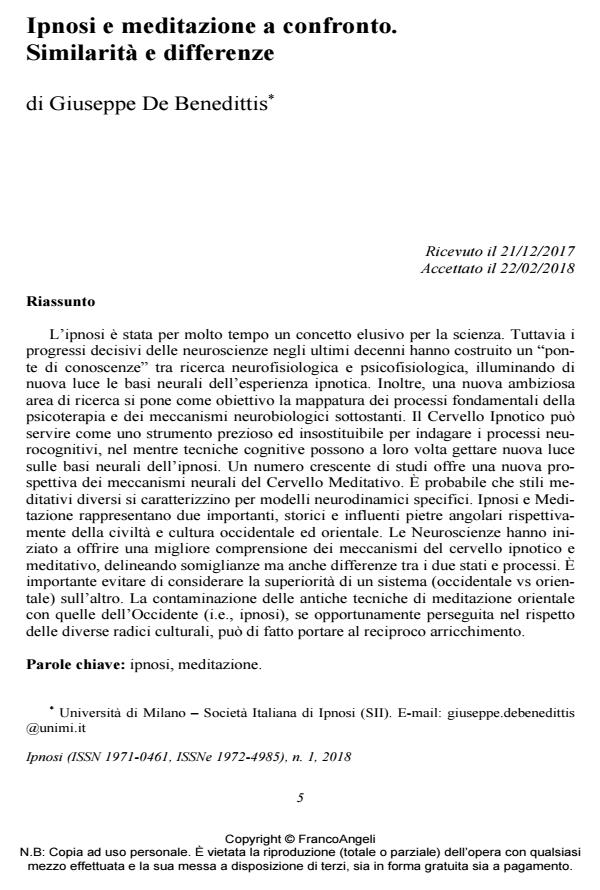Hypnosis vs Meditation. Similarities and Differences
Journal title IPNOSI
Author/s Giuseppe De Benedittis
Publishing Year 2018 Issue 2018/1
Language Italian Pages 7 P. 5-11 File size 138 KB
DOI 10.3280/IPN2018-001001
DOI is like a bar code for intellectual property: to have more infomation
click here
Below, you can see the article first page
If you want to buy this article in PDF format, you can do it, following the instructions to buy download credits

FrancoAngeli is member of Publishers International Linking Association, Inc (PILA), a not-for-profit association which run the CrossRef service enabling links to and from online scholarly content.
Hypnosis and Meditation represent two important, historical and influential landmarks of Western and Eastern civilization and culture respectively. Neuroscience has beginning to provide a better understanding of the mechanisms of both Hypnotic and Meditative Brain, outlining similarities but also differences between the two states and processes. It is important not to view either the Eastern or the Western system as superior to the other. Cross-fertilization of the ancient Eastern meditation techniques presented with Western modern clinical hypnosis will hopefully result in each enriching the other.
Keywords: Hypnosis, meditation.
- La Fisica Quantistica incontra l'ipnosi. Dai fondamenti teorici alla pratica clinica Parte prima Giuseppe De Benedittis, in IPNOSI 2/2020 pp.5
DOI: 10.3280/IPN2020-002001 - Autoipnosi: strumento per il mantenimento dell'omeostasi per la prevenzione della malattia attraverso l'attivazione delle risorse interiori Silvana Cagiada, Rita Pizzi, in IPNOSI 2/2020 pp.25
DOI: 10.3280/IPN2020-002002 - La Fisica Quantistica incontra l'Ipnosi. Dai fondamenti teorici alla pratica clinica Parte seconda Giuseppe De Benedittis, in IPNOSI 1/2021 pp.5
DOI: 10.3280/IPN2021-001001
Giuseppe De Benedittis, Ipnosi e meditazione a confronto. Similarità e differenze in "IPNOSI" 1/2018, pp 5-11, DOI: 10.3280/IPN2018-001001